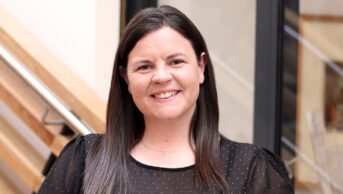Having jumped through the various hoops which the Department of Health has asked of community pharmacists to demonstrate the ‘quality’ community pharmacies offer, I am struck by how little difference any of the initiatives offer. Yes, they are all good ideas in principle, and we were already doing many of them without formal recognition.
It was after I completed my third round of face-to-face training for flu vaccination (5 minutes on injection technique and 55 minutes on cardiopulmonary resuscitation [CPR]) that I thought; what if someone collapsed in or around my pharmacy? I would feel confident to perform CPR, but, having had previous training about the difference an automated external defibrillator (AED) can make, I felt that maybe we were missing an opportunity to make a real difference in a life-or-death situation. Perhaps we should make the training for, and storage and upkeep of, an AED a quality payment hoop to jump through.
Without immediate treatment, over 90% of cardiac arrests end in death, but with fast CPR and AED use, survival chances increase from 6% to 74%[1]
. Ambulance staff, under unprecedented strain, are continuing to miss targets set for them in terms of response times for calls classed as ‘life threatening’ — the case for more accessible AEDs is a no-brainer.
Community pharmacists are the most accessible healthcare professionals of all; NHS England states “96% of the population can get to a pharmacy within 20 minutes by walking or using public transport”[2]
, and if members of the public knew every pharmacy had this life-saving piece of equipment, countless deaths could be avoided.
The AED training I received was provided by the Stephen Lyness Memorial fund. Stephen died from sudden arrhythmic death syndrome, in which someone young and healthy dies from cardiac arrest with no heart abnormalities to explain it. The family have worked tirelessly to increase the awareness of cardiac issues in the community to try to minimise the chances of it occurring again. They have instilled in me the knowledge of how powerful a machine an AED is, and I hope their idea can become a reality.
Michael McGuigan, chief pharmacist, James Cubbin and Sons Group
References
[1] Occupational Safety and Health Consultants Register. Would you know how to use a defibrillator in an emergency? 2017. Available at: https://www.oshcr.org/would-you-know-how-to-use-a-defibrillator-in-an-emergency/ (accessed September 2018)
[2] NHS England. Quick guide: extending the role of community pharmacy in urgent care. 2015. Available at: https://www.england.nhs.uk/commissioning/wp-content/uploads/sites/12/2015/11/quick-guid-comm-pharm-urgent-care.pdf (accessed September 2018)


